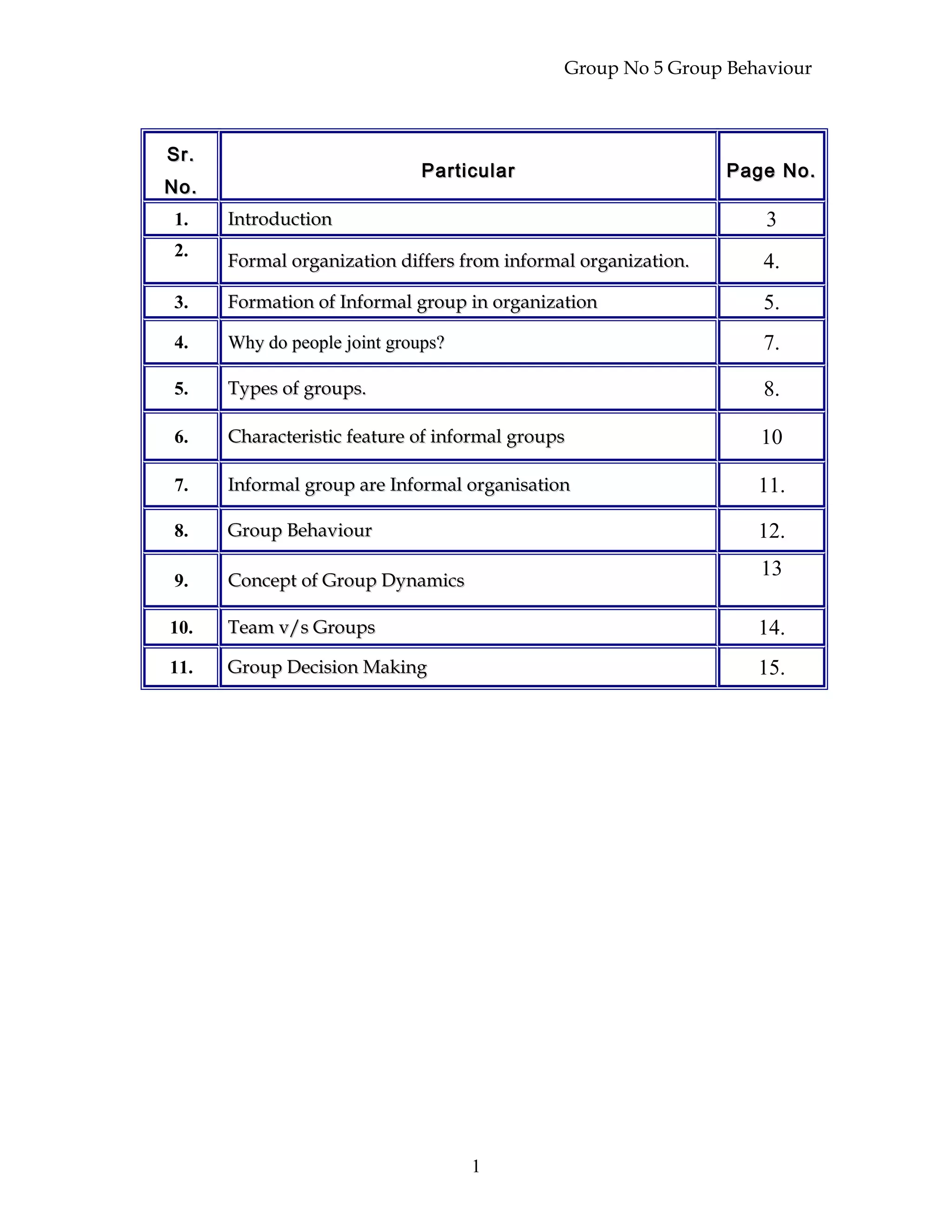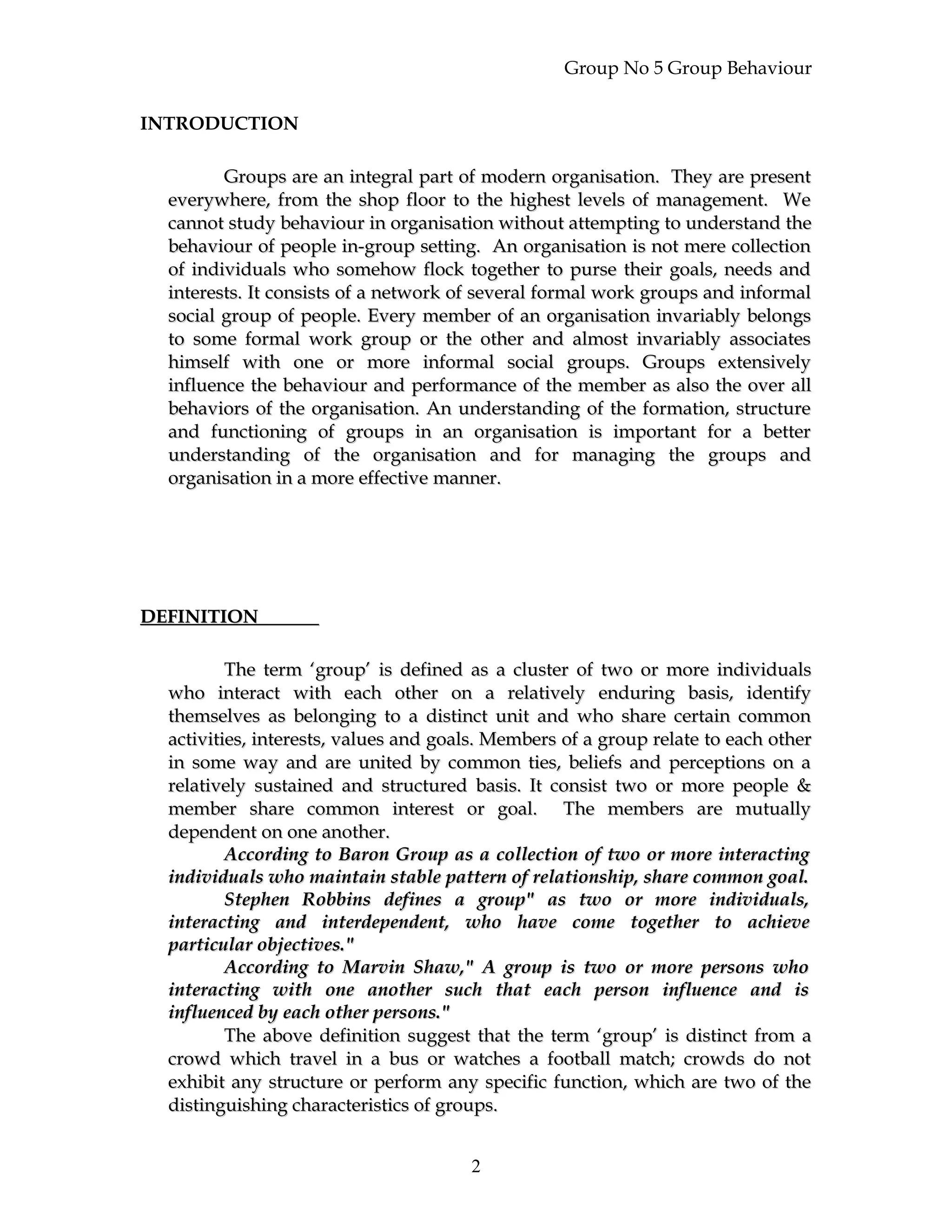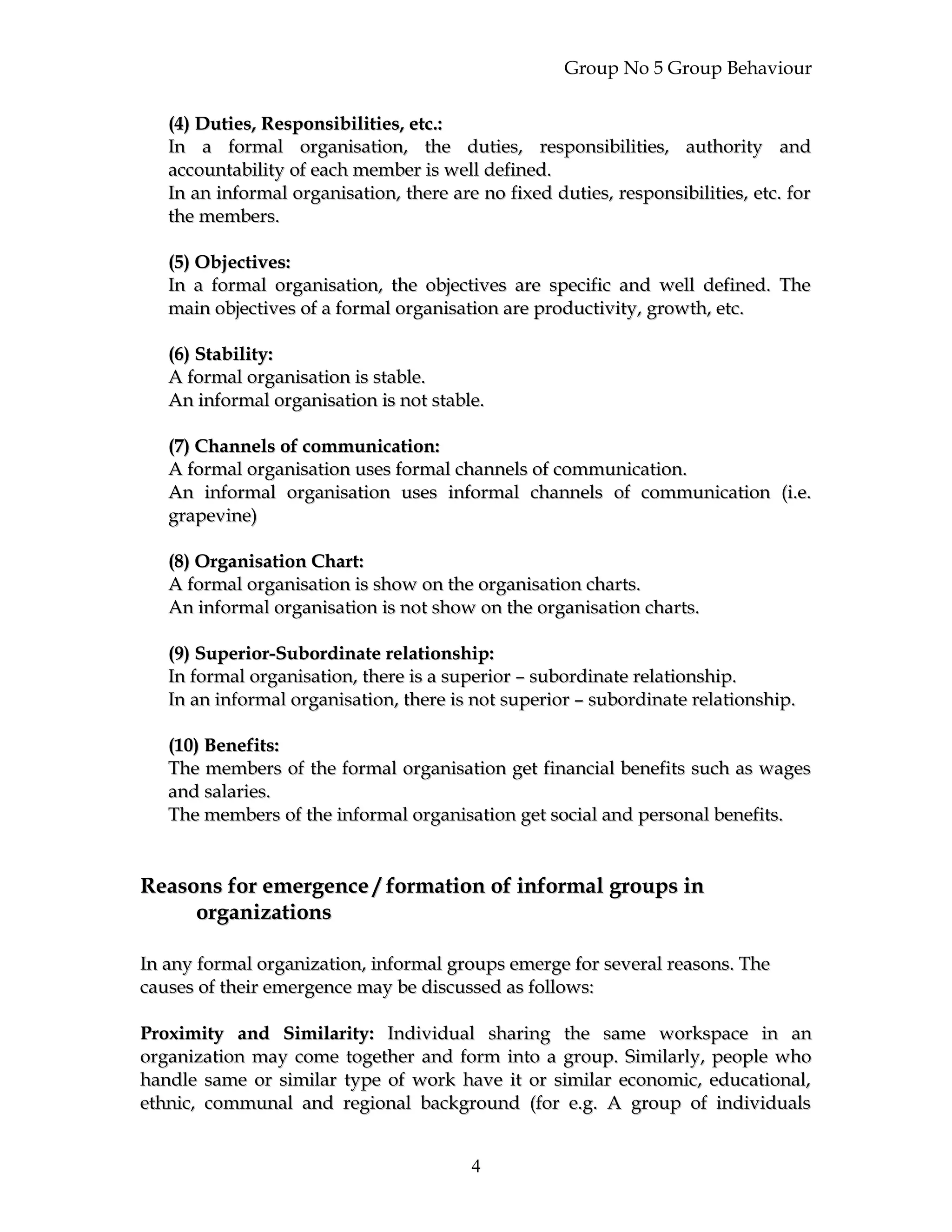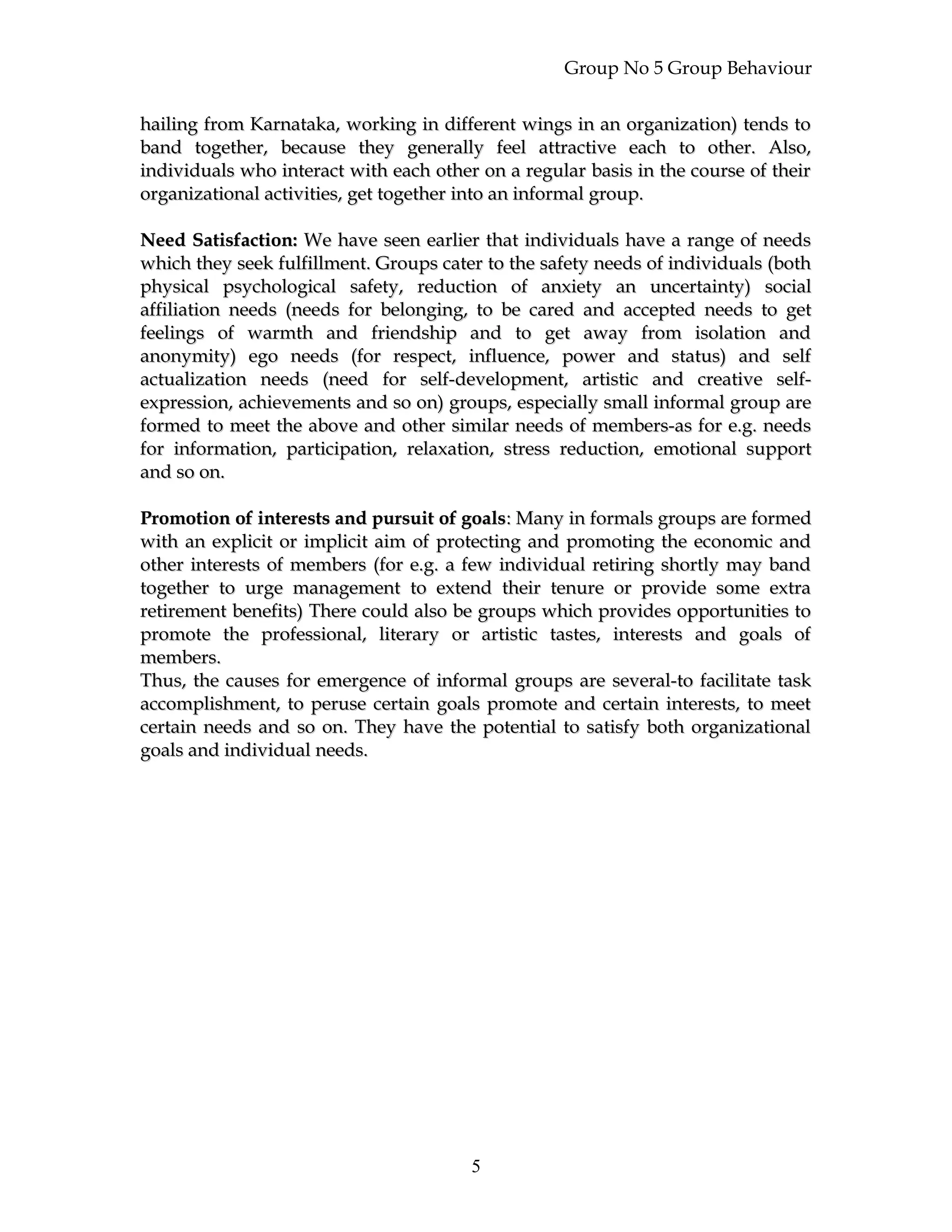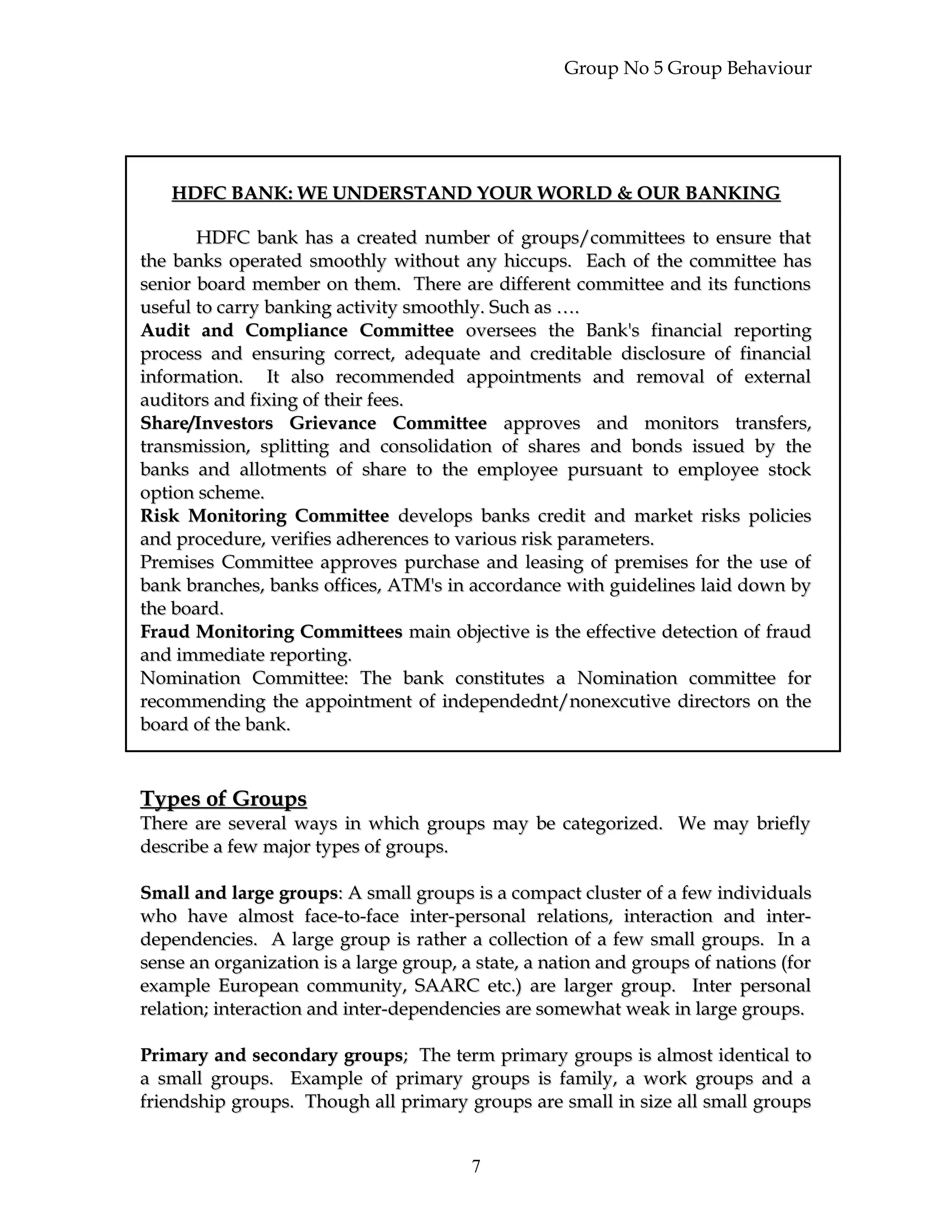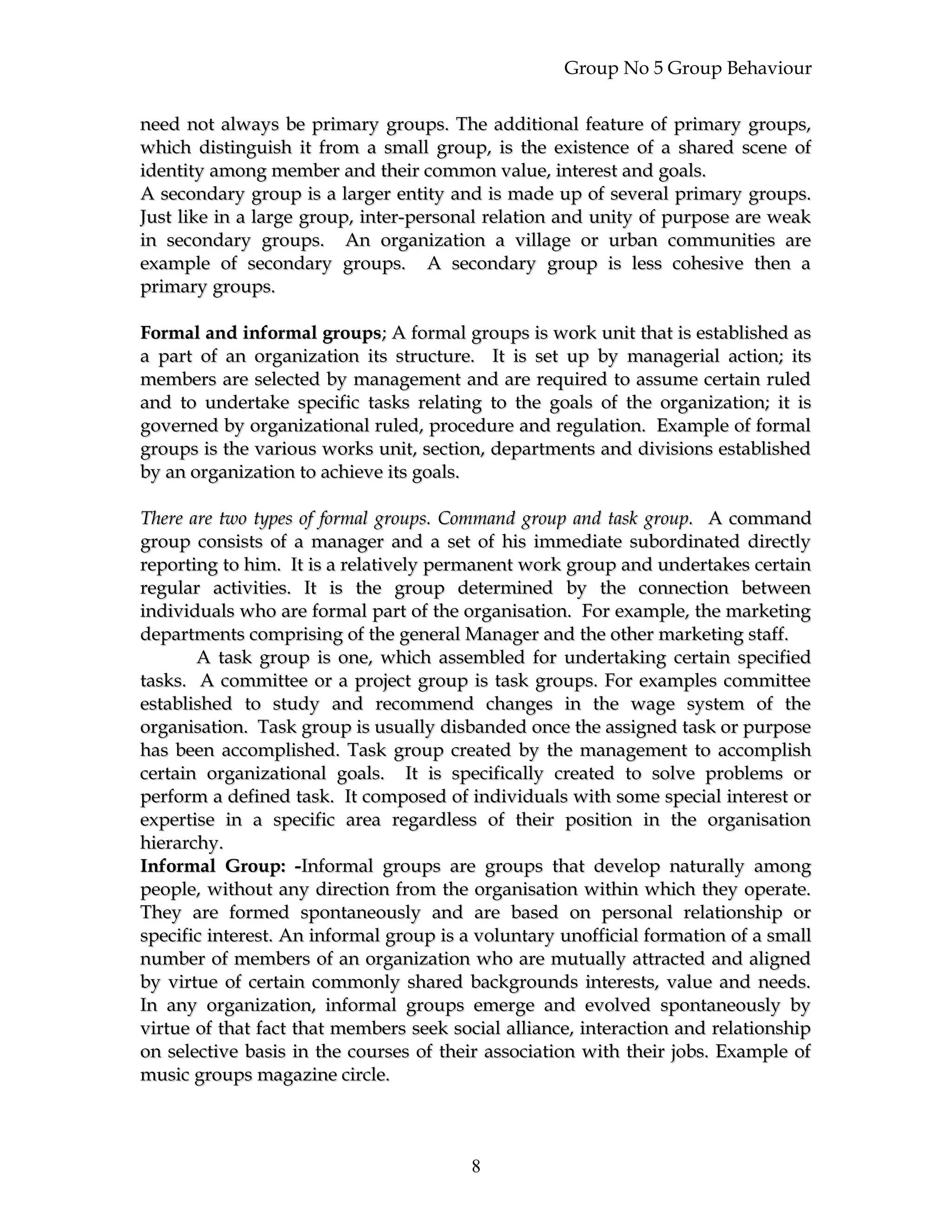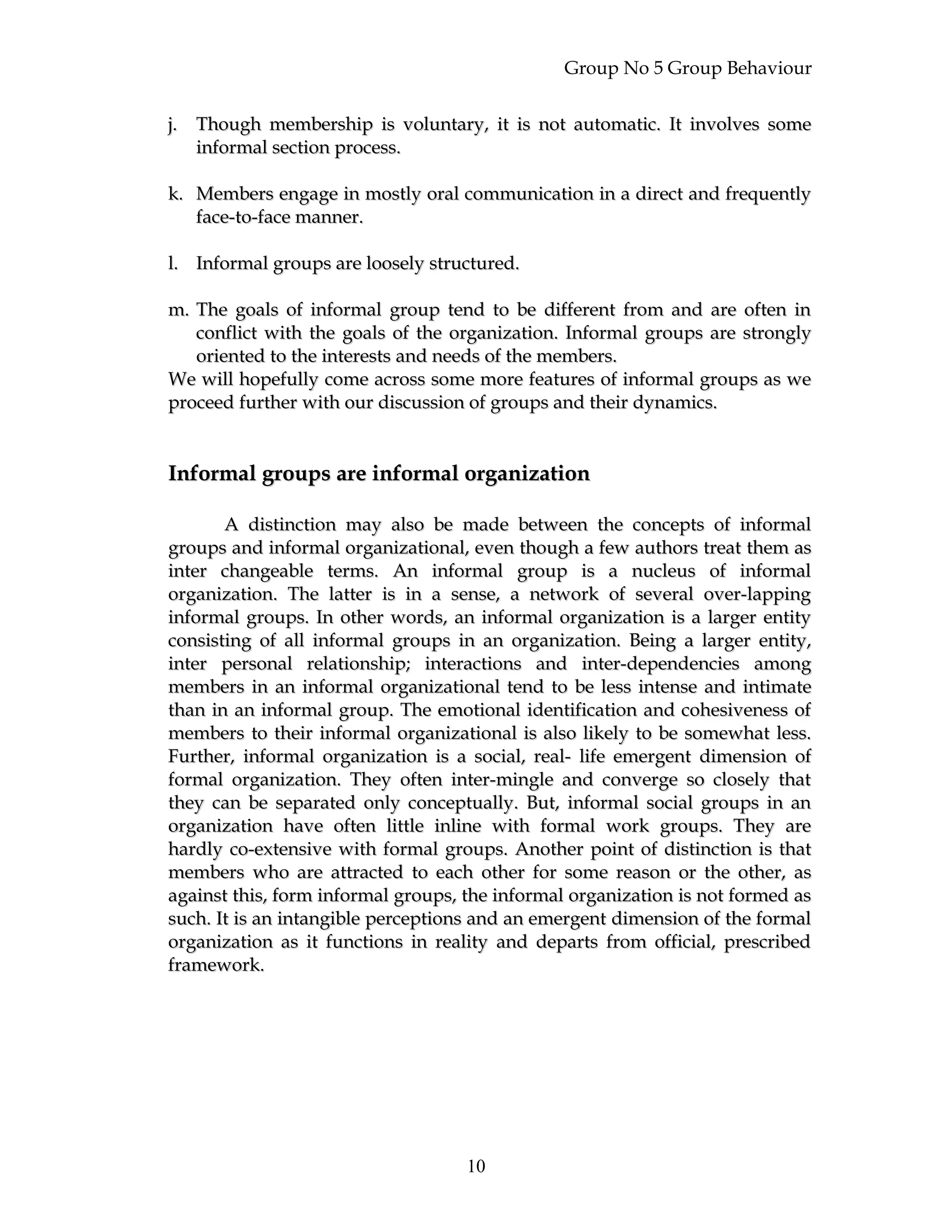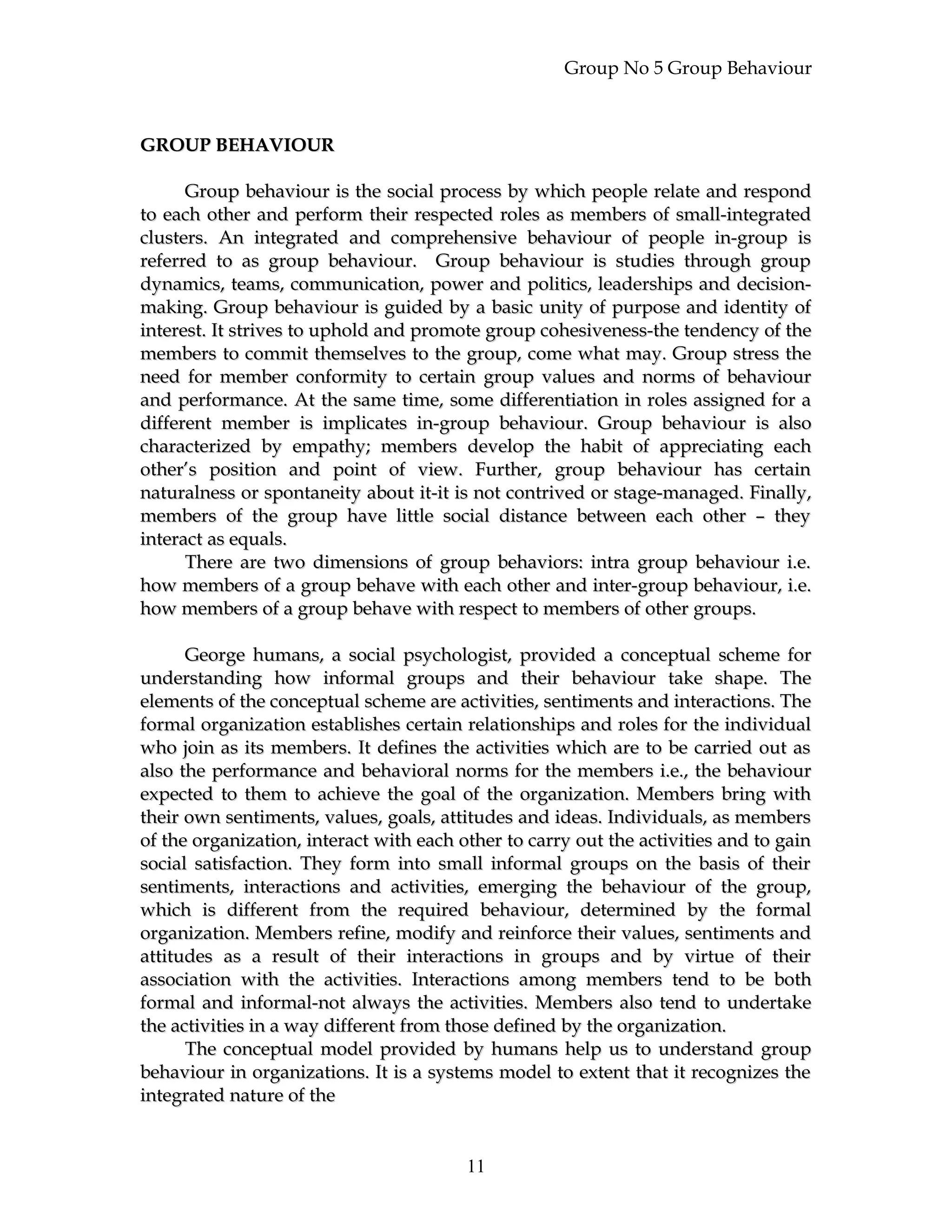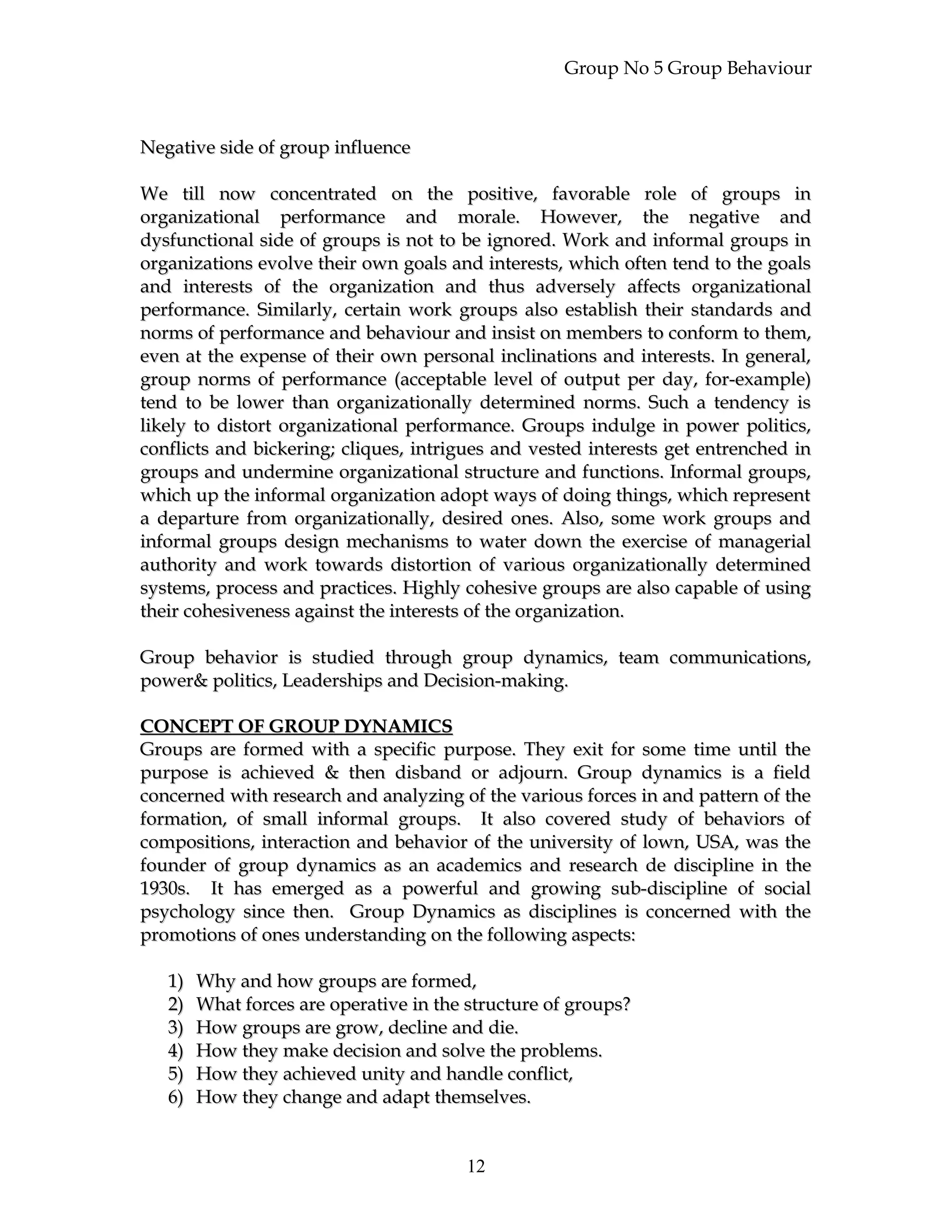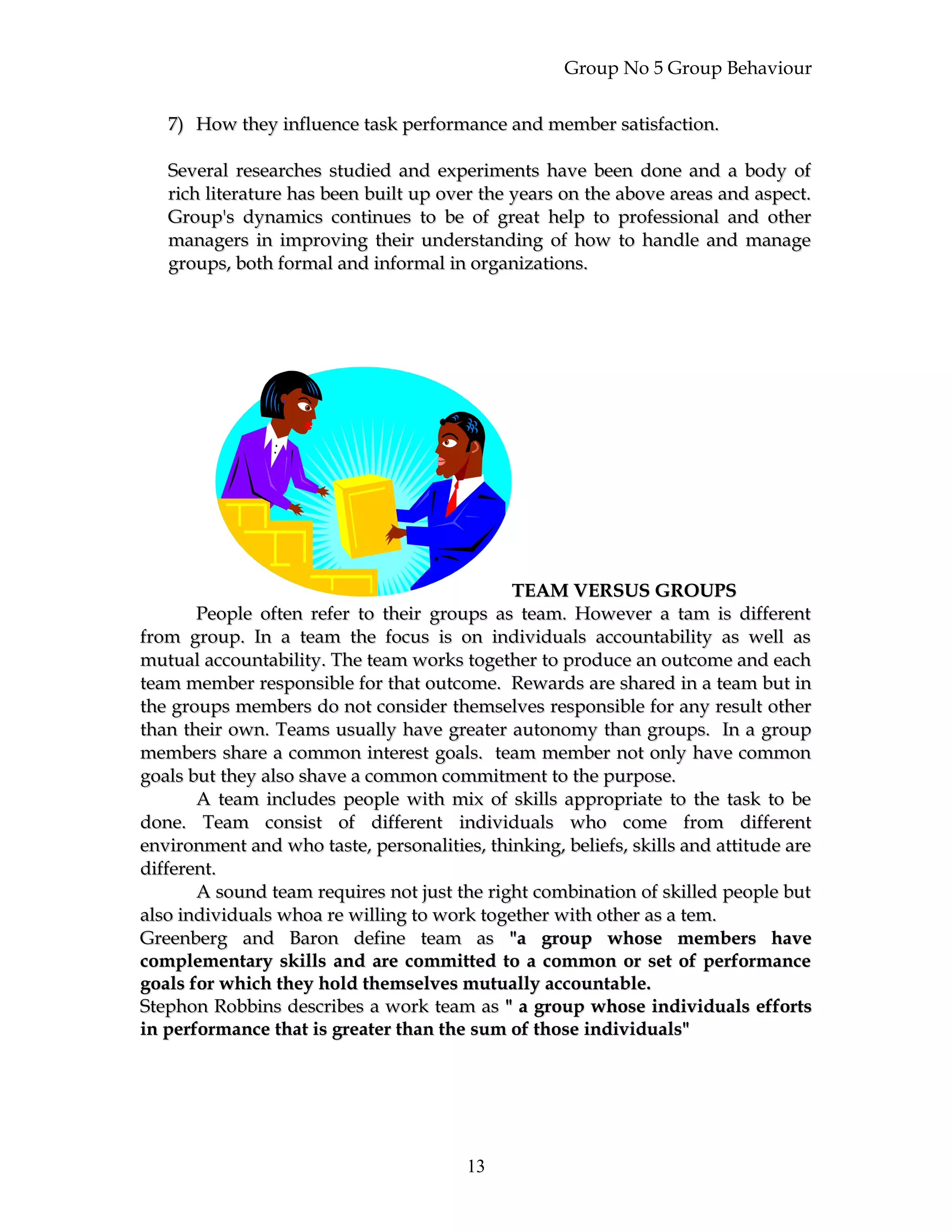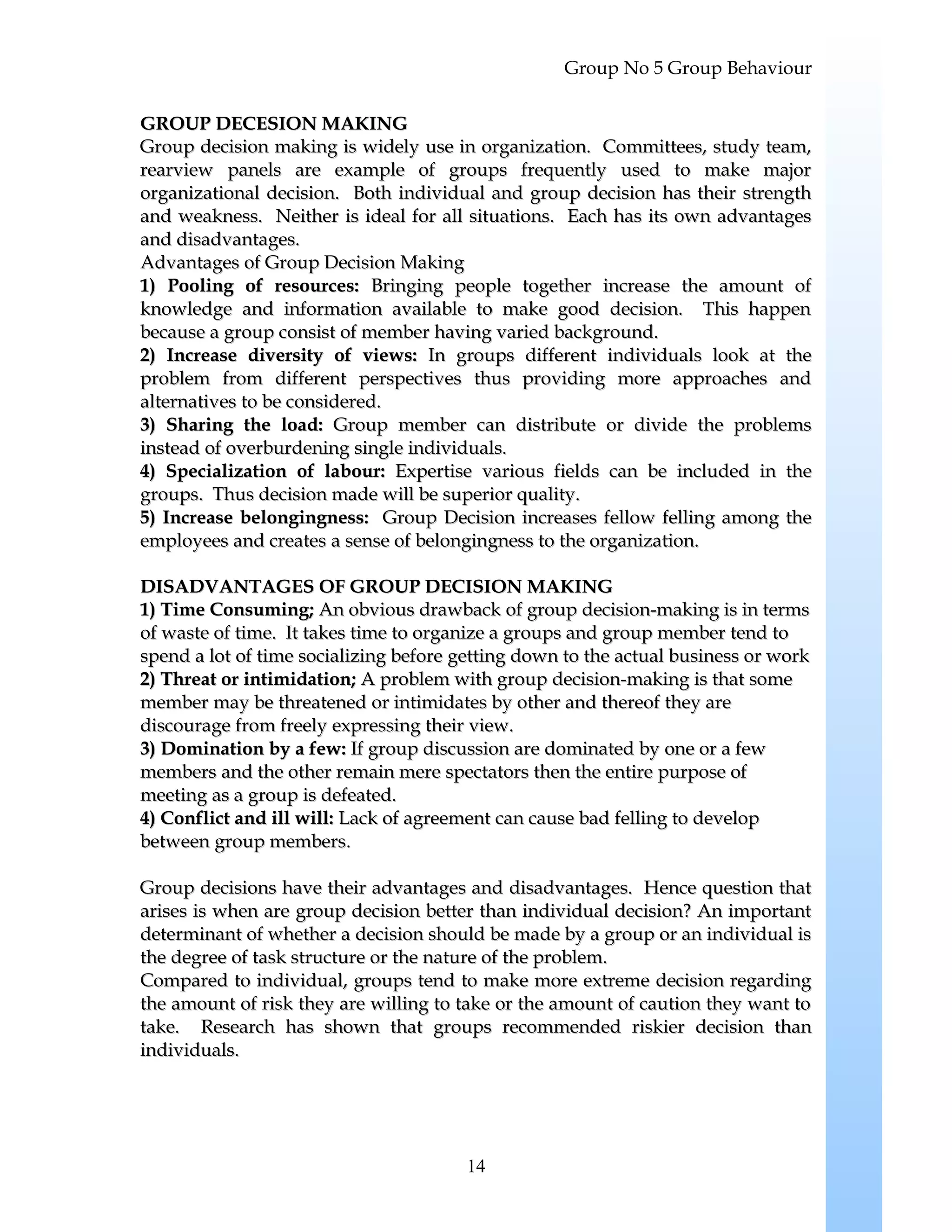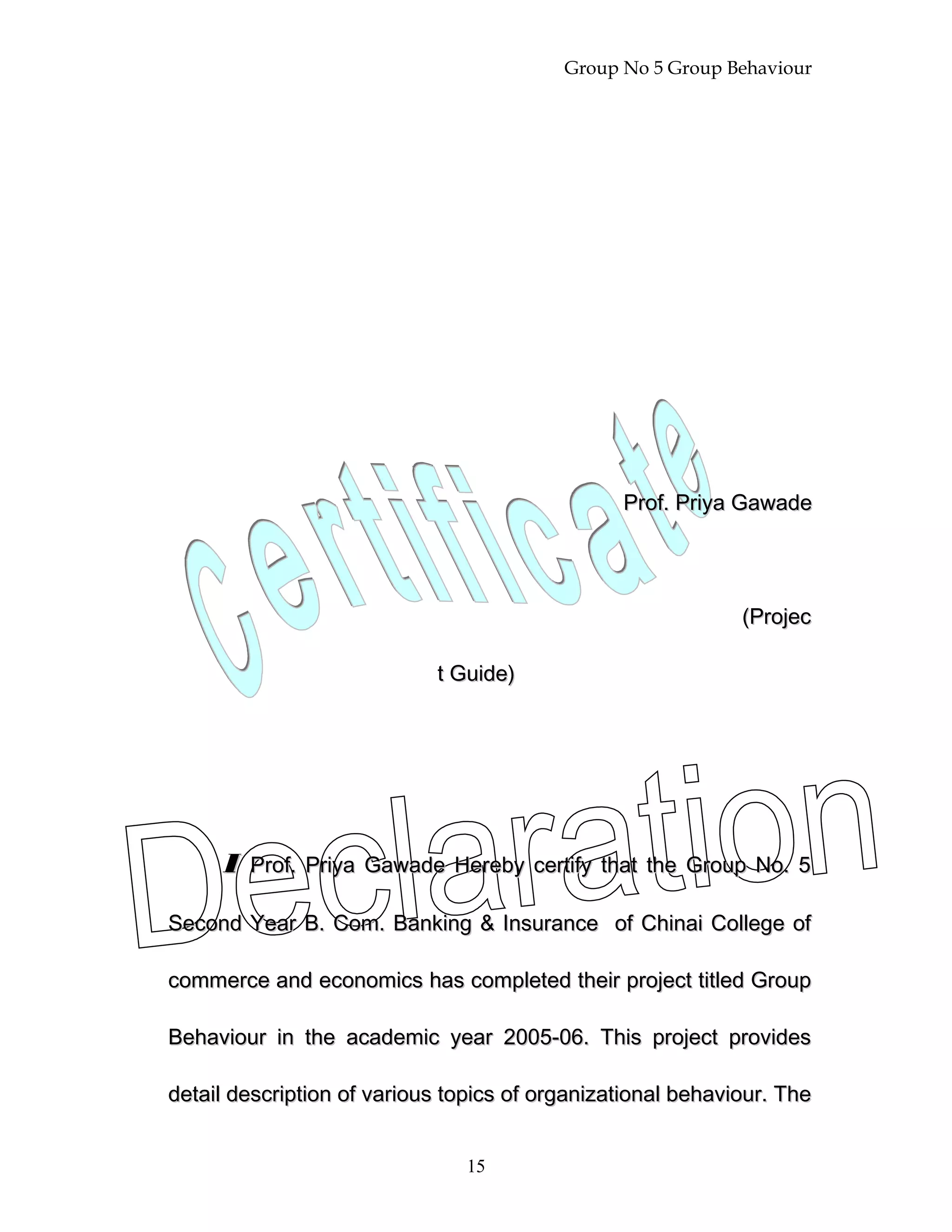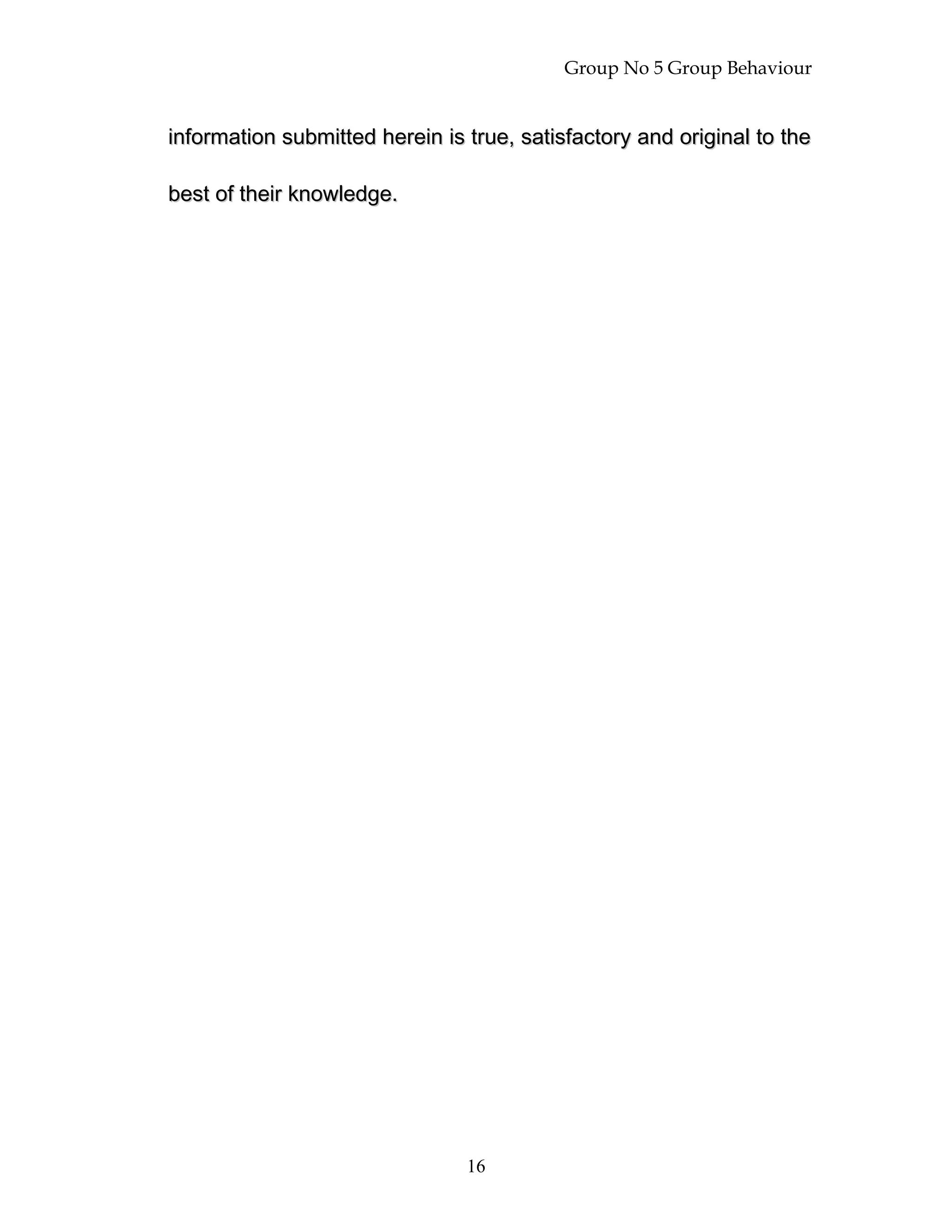Groups form both formally and informally within organizations. Formal groups are established by management to achieve organizational goals, while informal groups emerge spontaneously to meet members' social and psychological needs. People join groups for reasons like security, affiliation, power, goal achievement, problem solving, and to boost self-esteem and status. Informal groups play an important role in organizations by fulfilling members' needs and potentially helping achieve organizational goals.
